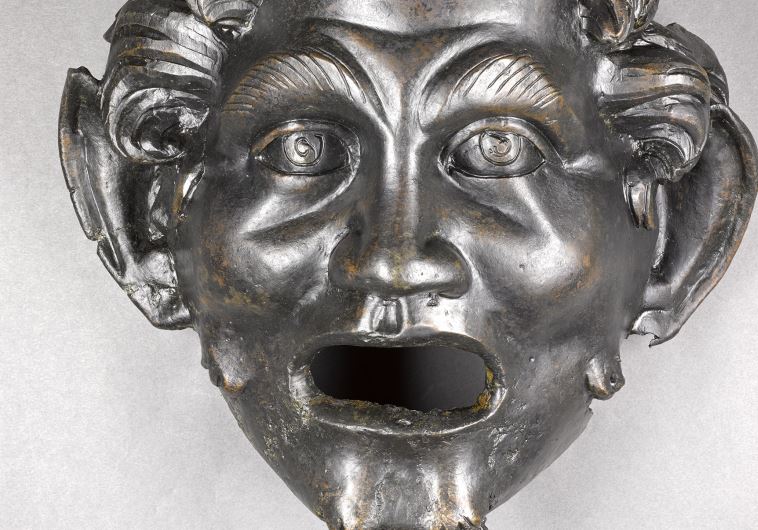“Now that the whole gate has been exposed, we not only have better information for dating the mask, but also a clue to its function. Are we looking at a gate that led to the sanctuary of the god Pan or one of the rustic gods?” – Dr. Michael Eisenberg

PHOTO: jpost.com
HAIFA, ISRAEL – one year ago, a large bronze mask of the god Pan– the satyr god of shepherds, music, and pleasure, was discovered at Hippos-Sussita National Park. It was an unique find that sparked questions across the archaeological community. Researchers believe it to be the only one of its kind in the world. Most of the contemporary masks unearthed up until then had been miniature. Archaeologists were baffled as to what such a large mask was doing in Hippos and wondered as to its possible function. Well, further investigation at Hippos may prove to solve that mystery.
Hippos was an ancient city located on a hill overlooking the Sea of Galilee in northern Israel. It was part of the Decapolis, or the Ten Cities, a section of Roman Jordan, Syria, and Israel that was much more Hellenistic than the surrounding Semitic peoples. Archaeologists have yet to discover whether or not it was a military or urban settlement. It never grew to be very large, as the citizens relied on rain cisterns for their water supply.
Since about 2000, archaeologists have been working on unearthing Hippos’ secrets and history. The site is currently under the care of the Institute of Archaeology at the University of Haifa.
The mask was originally found in the excavation of a large basalt building. Dating the artifact has been extremely difficult, and explaining its function has been even more so. Researchers had hoped that as they excavated the rest of the building, the work would provide clues. The site didn’t fail them.
Archaeologists working this year finally uncovered Roman gate near where the mask was found. The gateway was probably over 6 meters high, and the building beyond it that housed the mask was probably even taller. They believe it’s part of a much larger compound. It dates back to the rule of emperor Hadrian, about AD 117 to 138, perhaps even earlier. Archaeologists believe it was mounted on a wall or altar.
“When we found the mask we assumed that it had filled a ritual function. Since we found it outside the city, one of the hypotheses was that we were looking at evidence of a mysterious ritual center that existed outside the city. However, as we all know, monumental gate structures lead to large compounds.” – Dr. Michael Eisenberg
The complex was possibly a huge sanctuary or temple built in honor of the god Pan or another similar god. It stands strategically near the city of Hippos, probably built in order to gain the god’s favor for the city. It’s a very unusual find– temples to Pan are few and far between. The largest of sanctuaries for Pan is located north of Hippos, at Paneas. The worship of the god usually was carried out in caves and other more natural settings, like forest groves or along rivers or ponds. But, perhaps Hippos and Paneas were closely related. The sites could be linked by a shared religion.
It’s hard to say what exactly went on in this large, mysterious complex. Worship of Pan usually included strange, secret rituals including nudity, sex, gluttony, and wine, but we won’t know exactly how the site was used until further research is conducted.
The follow-up excavation started this month, staffed by dozens of volunteers and academics from around the world.
“What kind of worship of Pan or his fellow Dionysus, the god of wine, took place here in Hippos? To answer that question, we will have to keep on digging,” – Dr. Michael Eisenberg

